This Navratri, as we reel under the pandemic that seems to be in no hurry to leave (thanks to us), I decided to make this void of not being able to celebrate one of the most vibrant and vivacious festivals of Gujarat a little more bearable. I plan to share a recipe to an easy peasy Prasad everyday. Since we are depending less on market bought foods these days, thought this might be useful.
To begin the series, I invited Shwetal Bhatt to share her learnings and inputs on Navratri and Prasad.
As Shwetal shares…..
“The smell is in the air and the music is flowing through our many devices as forwarded messages, but this year we may need to make do with just that. Navratri is around the corner (17th October-2020) and my mind meanders into all the other details of Navratri that sometimes get lost in the buzz of the strong energy of doing Garba. One such detail is the food patterns. As our sleep cycles went for a toss, our food patterns changed. In the late 80s and 90s our post Garba snack included cold coffees, sandwiches and sometimes bhel on weekends, there were not so many food carts on the roads those days, hence we mostly relied on home food past the revelry. Let me give you a look into the timetable of those 10 days. We would do Garba from roughly 10 in the night to about 4 in the morning (pre-dawn). We would then reach home to grab a snack, get ready and leave for school. We would zombie through school, come home post noon, grab a quick lunch and hit the bed. Then wake up in the evening and start planning what to wear, a light dinner and we leave to do Garba by latest 9pm (one has to reach before the first beat). Food during Navratri was light and nutritious, my mother would ‘observe’ Navratri by doing ek-taanu (eat only one full meal a day) and eat fruits and milk at other times, it was something she picked up from my Dad’s mom. She would also light the Garbo (a clay pot with holes in it and a lamp at the centre) at sunset and sing a very different Aarati from the one sung at Garba grounds. I remember this distinctly as I would need her help and opinion while sorting my trinkets and clothes and she would offer it in pantomime as she went on with the rituals. The prasad offered to Mataji no Garbo then become her dinner and our desert. It would usually be cut fruit with some nuts soaked in lightly sweetened milk. Some of my relatives offer suran no sheero (yam Halwa) and dudhi ni kheer (bottle gourd pudding) however, I have not seen these in my house. On the 8th day/ night, “aatham” as it is called, the fast is a little more stringent (my mom did the fasting, not me), there is something special about that night, the moon has a mesmerising glow that night, it makes you think about the significance of these festivals.
The next day the ninth day is an elaborate but comforting meal of lapshi or kheer-pudla, dal-bhaat-shaak- rotli (DBSK) and vada. That is the day when Mataji leaves our house in the evening after giving her blessings. The lit garbo is taken around the house radiating its specks of lights as blessings. This is one of the most beautiful sights; a contrast to the glamour and colour of the Garba ground and yet equally powerful. We were/are not an overly religious family, rather a questioning rationalising one, but we enjoy all rituals as we deconstruct and make sense of it in our lives. Coming back to food, it is strange that though we did Garba for close to 5-6 hours we never carried any water bottles or tuck boxes with us. We sauntered into the grounds with nothing more than a batwa (a cloth pouch) with a hanky and some cash for an emergency. Sometimes there was a matka (earthen pot) of water kept somewhere on the ground, but I don’t remember drinking water. The only source of nourishment came in the form of prasad, a few morsels that went a long way, sakariya-shing (Sugar balls and roasted peanuts), sakariya- daliya (sugar balls and roasted gram), khadi saakar- shing (rock sugar and roasted peanuts) and sometimes a powder which was a mix of desiccated coconut, peanuts and sugar. All these were easy to eat without getting our hands dirty. Then there were others, which were occasionally offered such as sweet dry boondi, sheero, jaggery-coconut and revdi (sesame seed candies) but they were not so popular with us garba doers as it made our hands sticky. Every night the prasad was offered by a different individual and I think the prasad was designed to be inexpensive and one that could reach as many people as possible most easily. These sweet morsels called prasad were sudden energy boosters for those of us who did the Garba. I remember girls giving coy smiles, to the boys distributing prasad, for a bit more. Somewhere some aunty is going to be horrified, that I look at prasad as a source of energy and that there was some healthy flirting involved in its distribution, but I have always seen all rituals as social catalysts. Prasad itself I think is a leveller. I remember in my childhood when we did Garba on the road in our colony, it was open to all, and the children from the nearby slums would always join in. Prasad was a huge magnet for them as it was for us and I remember we would scramble to get it with our hands stretched out. These instances brought out the social significance of certain practices. We need to keep the essence of this culture and not let it get lost in hardened religiosity and traditions. That leaves me with a thought… how do we symbolically distribute prasad this year? How do we share something with others while making them seem a part of it rather than making it an act of giving (which, I feel, feeds the givers ego more than the receiver’s soul)? All we need to do is expand the circle and let others in….Just the way we do when we do Garba.
About Shwetal
Shwetal Bhatt is a designer, artist, an educator and a mom. An alumnus of the National Institute of Design, Ahmedabad and the Faculty of Fine Arts, Baroda and IIMB (MPWE 2010). Shwetal runs an independent design studio, FoDoMe, which makes works in copper and glass since 2005. She also joined The Valley School, Krishnamurti Foundation India, Bangalore where she worked on the tangible and intangibles of art and creativity with children of all age groups as well as adults (predominantly in sculpture and carpentry).
In 2013, inspired by a short conversation that she had with her students, Shwetal Bhatt, embarked on a journey of documenting the Navratri Festival of Baroda. The end result of which was the film, “Ramji Thakkar Bhimji Thakkar” a 74 min film in Gujarati and English. Shwetal took on the many roles of researcher, director, camera person, translator and promoter of the film as she was driven by her passion to bring this story to the people.
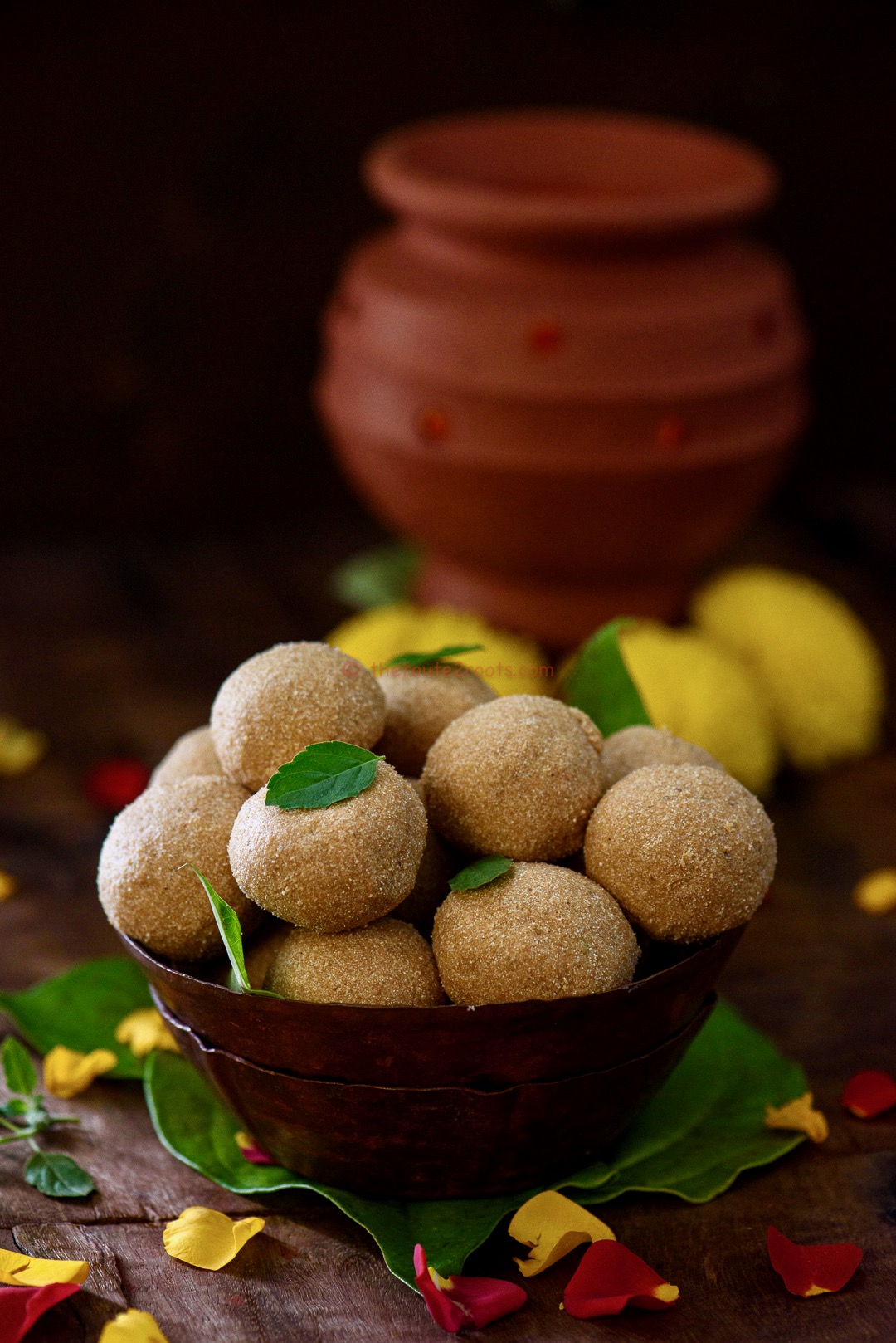
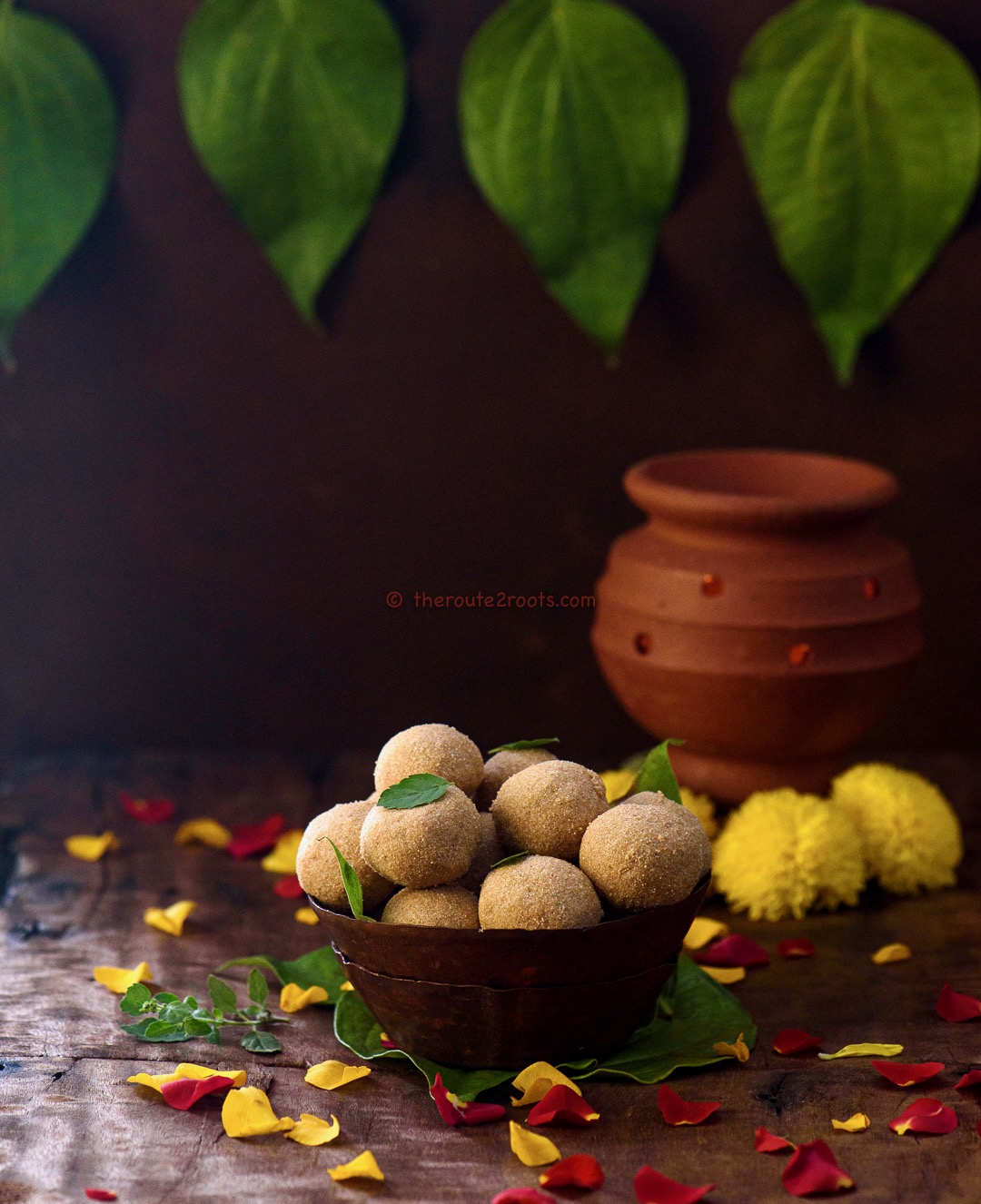
Rajgira Ladoo - Amaranth laddu
Ingredients
- 1+3/4 cups rajgira flour/ amaranth flour
- 1/2 to 3/4 cup ghee, melted
- 3/4 cup sugar ( I used powdered Khadi sakar/rock sugar)
- 3 tablespoons milk
- 2 green cardamoms, powdered
Instructions
Heat a thick bottom kadai on medium flame.
To the hot kadai, add the ghee and warm it.
Once the ghee has warmed up add the flour.
Roast the flour in ghee till it takes a light pink colour. Keep stirring continuously. Do not leave the roasting flour unattended.
You will notice that as it roasts, the flour will start releasing ghee and emit a pleasant aroma.
Initially the flour will be very dry but as it roasts it becomes light and loosens up.
It will turn pinkish brown in colour.
Once the flour is roasted, add the milk. Immediately the roasted flour will bloom.
Mix well and turn off the flame.
Once the flour has cooled down, add the sugar and cardamon powder.
Mix well.
Shape in Indian lime sized ladoo.
Transfer in an air tight container.
Consume within a week.
Rajgira is easy to digest and can be eaten during fasts.


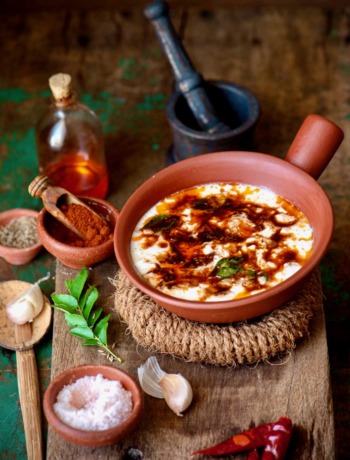
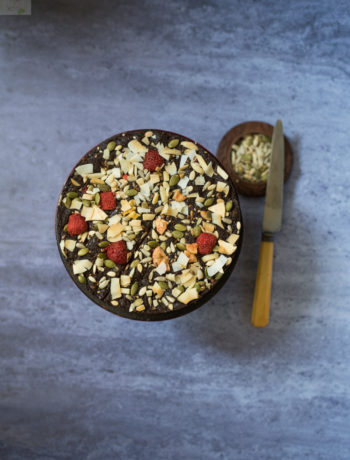
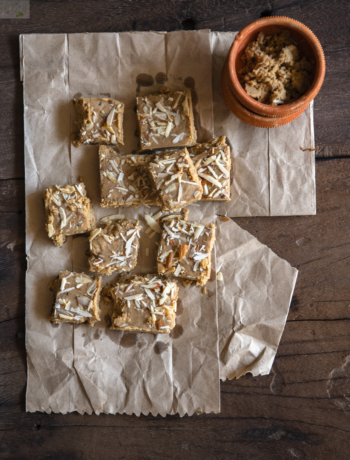
No Comments